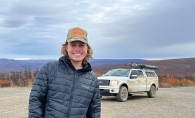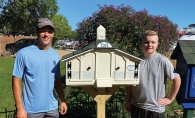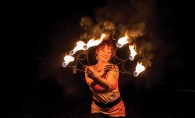Last fall, Anita Kordonowy of Minnetonka decided to take a long walk—a 500-mile long walk, in fact, that took her from France’s St.-Jean-Pied-de-Port to Santiago de Compostela in Spain.
Her 42-day journey was a part of the Camino de Santiago, an ancient pilgrimage with various routes, all leading to the tomb of St James. The route draws more than 100,000 people each year from around the world who begin preparing months beforehand and often arrange to walk in organized groups. Along the pilgrimage, participants find lodging at facilities that are much like youth hostels, specifically serving walkers. These stops provide welcome rest and a sense of community.
“The dinners were family-style, so I’d start chatting with people while eating this wonderful dinner put together by locals,” Kordonowy says. “I met so many amazing people whom I won’t forget. All of them had a different story and reason for being there.”
She met many people who were inspired to do the pilgrimage due to a big life change, a question of identity or after a tragic event. For some, it was simply part of their bucket list. Kordonowy’s participation was somewhat spontaneous; she decided to join her sister-in-law, who planned to walk with two friends. To prepare, she began walking Lake Minnetonka’s trails and lifting weights. Though the Camino de Santiago would be strenuous, the biggest challenge would be leaving her family. As a mother of five kids, Kordonowy admits to spending most of her time taking care of other people.
“I tend to prioritize myself last, so it felt selfish to take this big trip alone. But I’m glad I did, because it turned out to be a blessing. Being able to spend some time being in my own thoughts was wonderful and made me more comfortable being alone,” she says.
Self-reliance is essential to completing the route, according to Kordonowy. She walked most of the path by herself after one of her group members became injured. From that point on, she was on her own to maneuver the paths, check weather conditions, meet time restrictions and get safely to her next destination. Though it was challenging, she felt a sense of accomplishment that didn’t hit her until the very end, when she crossed from eastern to western Spain.
Another refreshing element of the trek was Kordonowy’s disconnect from technology. Though she kept her family updated with pictures of the scenery, her focus was on getting to the right location and enjoying the landscape around her.
“Everything slows down when you’re walking,” she explains. “My family still can’t believe that there wasn’t a single day where I didn’t want to walk, but it’s true. I never got tired of it.”
When she returned near the winter holidays, Kordonowy jumped back into life at home—but the Camino de Santiago remains a once-in-a-lifetime experience that provided her with priceless lessons.
“It taught me to have faith in myself,” she says. “Sometimes you start to question if you’re going the right way or whether you’ll get to the next town or not, but you always do.”
To learn more about the Camino de Santiago, visit the website here.









